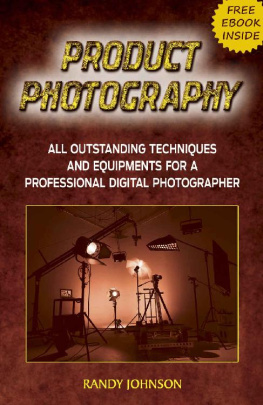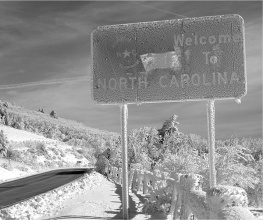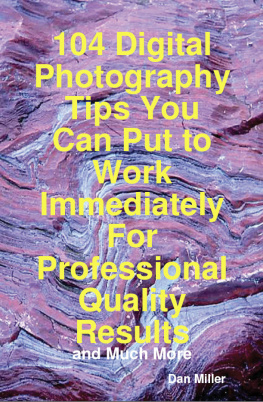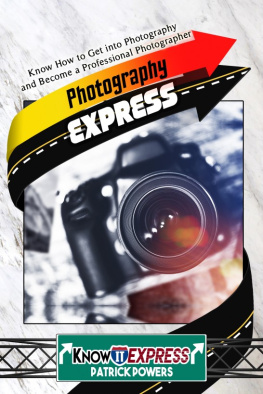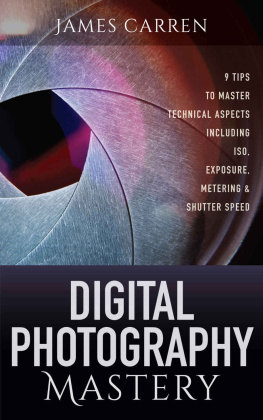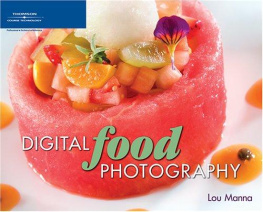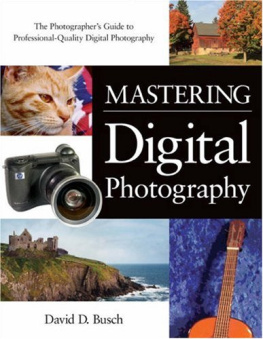Product Photography
ALL OUTSTANDING TECHNIQUES AND EQUIPMENTS FOR A PROFESSIONAL DIGITAL PHOTOGRAPHER
By
Randy Johnson
COPYRIGHT 2016
Wait! Before you continue.. Would you like to know how to eliminate the subconscious fears that may be stopping you from being great?
Just to say THANK YOU for buying this book I am giving you our E-book, BRAIN POWER FOR FREE. Yes its FREE this book can help you discover the hidden fears that may be holding you back. So get your copy now
Click here to get your FREE ebook now.
INTRODUCTION
As technology advanced, the definition of the word career changed too. More and more job opportunities sprang up giving people the ability to either improvise or carve their own path where none existed before. Of all these mush- rooming careers, the most notable is digital photography.
What does a picture mean to you? Even in our own minds we come up with our own picture while trying to figure out things. As our fore fathers said a picture is worth a thousand words- no one yet has come up with a better way of describing our passion for capturing memories and images on film- and, in this day and age, on memory chips as well.
You may not remember most of what you see today, but you will if you record it through the lens of a camera. Unlike memories, which can shift and fade over time, photographs are unchanging images. They are a visual catalog of our lives. Moments, people, objects, and places rise from the ordinary to the significant when you capture them in photographs. With a photograph, you are telling the viewer, This is something or someone important to me.
Cameras help us capture every moment in our life time including the people and things most dear to us our parents, our kids, our friends, our pets. Just as you reflect on your life when viewing old pictures of yourself, so will your children use the images you create to look back on their lives. Your unknown descendants are looking over your shoulder as you record your life on film.
Cameras are also handy tools for simply documenting how things look. We use them to take pictures; of precious objects for insurance purposes, for selling items online, for documenting beginnings, middles, and ends of projects.
These images are often purely factual, without emotional content, yet they too serve an important purpose.
With the advent of digital photography in the mid 1990s, many people predicted that film-based photography would become a thing of the past, much like earlier predictions that the rise of the computer would result in the demise of the printed word. But film-based photography is very much alive (as is the printed word) and is, in fact, thriving. Not only that, the same technological advances that made digital photography possible have made film-based cameras more affordable, easier to use, and capable of doing more than they ever could before.
There are no denying digital photography's advantages over film-based shooting. At the same time, film-based photography continues to offer many advantages over digital imaging. Many photographers use both, choosing the platform that best suits their needs depending on what they're shooting. Regardless of equipment choice, knowing how to take good pictures, how to compose them, how to light them, how to capture action versus still images is still important. No amount of technological advances will at all time replace the photographer's position behind the viewfinder.
While this book is meant to provide a general overview of what photography is all about, its primary focus is on helping those photographers with passion in product photography.
These are exciting times for anyone who enjoys taking pictures. Not only are there more equipment choices and options than ever before, there are also more opportunities for sharing your work with others. Regardless of what kind of photographer you are or aspire to be, the richness of photography is so great that it can't be exhausted in a lifetime. Even the most experienced professional photographers will tell you that there is always a new challenge, something else to be learned, a technique to be honed, and a skill to be mastered. The more you use your camera, the better your life will be.
The more you take pictures, the more ways you will have to experience and savor life. Having a photographer's eye, mind, and heart will give your life deeper meaning. You will create memories and connections for years and years to come.
This is a far cry from what you would do with your fancy Smartphone camera. It is a professional arena that needs a perfect understanding of both the tools and rules of the game.
If you want to get into studio photography and learn how to take great studio photographs this book will help you. The book is designed to assist those just starting out as well as established photographers who wish to develop their lighting skills and photographic repertoire. Within these pages, you will find the relevant information needed to get you started and further develop your understanding of studio photography like a pro.
There are many different genres of photography, yet they all have one thing in common, which is to capture light.
Understanding how to make the most of light is a prerequisite for any photographer at any level in the business, the studio being no exception. As you would expect, there are some advantages to working within the studio, in that you are working within a contained environment and have full control over the light.
However, without the props and the natural background environment found on location, the studio can at times seem quite sterile, and you will inevitably need to work harder and more creatively to make the most of the shoot. This is why your understanding and application of studio lighting and photography is important.
If there is one thing that I have learned from my experience of researching for the right equipments and techniques to be incorporated in product photography it is that these photographers want clear practical advice.
I am convinced that the majority are hungry for a combination of fresh lighting ideas, the concepts behind those ideas and a greater understanding of studio terminology. Many have searched the internet and books at length without being able to find all of the necessary information in a single cohesive format, which is why I decided to write this book. No remonstrations or internet forum arguing over the smallest points; just clear and open advice that combines the lighting and photographic techniques all brought together in this book.
The advice is intended to help you understand how to get the best from your equipment and studio lighting, regardless of brand. Specific lighting examples have been set out in such a way as to enable you to understand how to light a subject, showing why it has been lit in a particular way and what type of equipment has been used. The techniques will also touch on common lighting mishaps and ways in which you can overcome them. You should find that they gradually increase in complexity as you progress your way through the book, yet remain sufficiently varied to enable you to steadily develop different ideas and apply the new skills you have mastered. Although the primary focus is on lighting techniques, other aspects of studio photography - such as equipment right through to the basics of RAW processing - are also covered. Understanding these areas helps raise both awareness and expectations.
Everybody enjoys a good photograph, and I truly believe that photography is accessible and that everybody can do it.
It is one of the few skills that can be studied at leisure. Although there are rules for good lighting, so it remains important to strike a balance between technique and creativity. Eventually, as your confidence and technical ability increase, you will begin to stamp your own personality onto your photographs. Master the techniques within these pages, build and experiment with them to create something new and different. This is what will make you a confident and well-versed photographer. Actually, this book will first introduce you to photographing; all what it takes to be an exceptional photographer and then give you all the details needed in product photography- taking pictures in studios.
Next page
